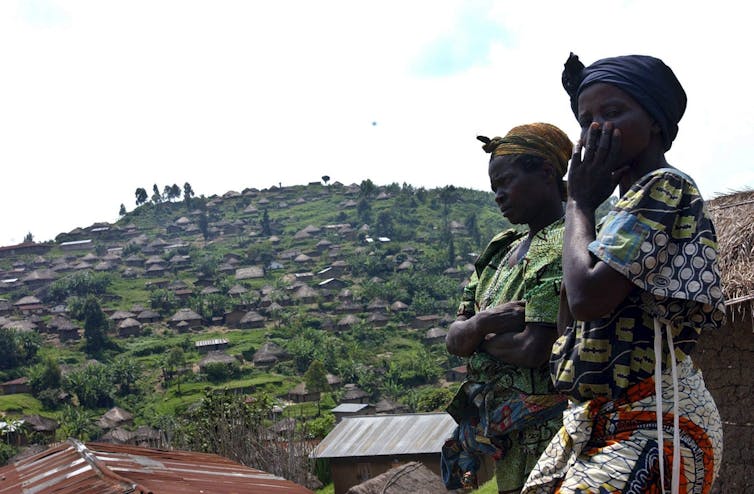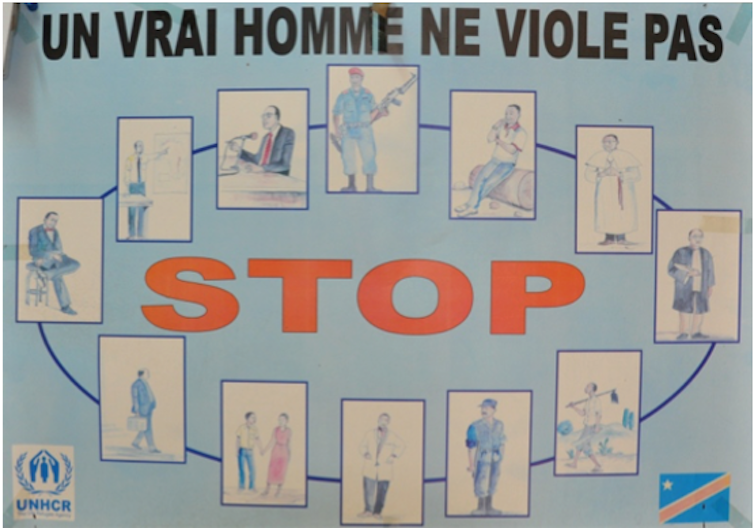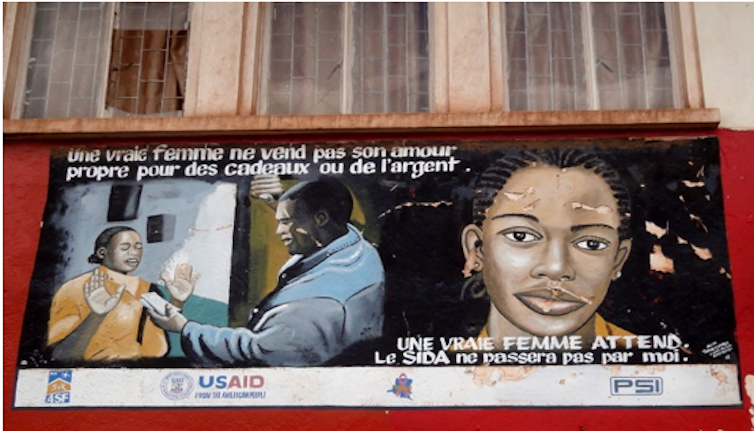
Charlotte Mertens, University of Melbourne
Sexual and gender-based violence is an enormous problem in eastern Democratic Republic of the Congo (DRC). The international focus has been on rape by armed actors, rather than on sexual and gender-based violence more broadly.
As a result initiatives have concentrated on combating perpetrators’ impunity and providing medical, legal, psychosocial and economic aid to survivors. But in recent years organisations have included programmes and interventions that challenge societal norms perceived to contribute to gender violence.
In our paper we examined the silent intent of some of these interventions. We found that they restate the importance of certain gender norms, such as the heterosexual nuclear family. And they emphasise traditional expectations of what a “proper” individual and family should look like. This echoes colonial policies that promoted ideal/European norms of a “domesticated and docile wife” and monogamous and “respectable” husband, living together in a heterosexual nuclear family.
This ideal of a stable, heterosexual nuclear family is, for many Congolese, not a reflection of their lived reality in the face of economic migration, violent conflict, environmental degradation and other dynamics affecting modes of living.
Our study uncovered important similarities between colonial and contemporary gender discourses. We hope this will lead to interventions against sexual and gender-based violence in eastern DRC being re-examined so that these can meet the needs and real living conditions of all those affected by sexual violence.
Gender stereotypes
Our findings show that sexual and gender-based violence interventions in eastern DRC often reproduce gender stereotypes. We will use two campaigns to illustrate this. The first, sponsored by the United Nations (UN) states that “a real man does not rape”.

It displays a broad range of traditional male roles in society. All the men are in full employ, fulfilling the key gendered role expectation of being a provider. This is a role that so many men in eastern DRC struggle with. Food insecurity, repetitive threats of renewed war, and unemployment produce a deep anxiety and uncertainty about the future. Under these circumstances many Congolese men have failed in their roles as breadwinner and protector.
It paints a static, monolithic picture of modern Congolese men as being “respectable” in society. The reality is quite different. Men in the DRC live in a war-torn society.
The campaign reaffirms stereotypes of “real”, upright men, who are well-dressed and employed. This promotes a dominant form of “strong”, successful masculinity while also inscribing norms of benevolent masculine protection, control of emotions, and heterosexuality.
The images of a disciplined police officer, a well-dressed soldier, and a man and a woman holding hands, present an ideal world in which men are able to live up to the gender roles assigned to them by society.
These images clash with Congolese men’s ordinary lives, which are marked by everyday violence from police officers, soldiers, or family members. On top of this they run counter to the constraints that stop men from achieving what’s perceived as respectable manhood.
Such ideals of what being a “real Congolese man” should be like, and the notion that they are achievable through individual betterment only, have been promoted since colonial times.
Another campaign, seen below and funded by an American international development agency, promotes conservative and regressive norms of feminine chastity.

This billboard states that “A real woman does not sell her self-respect for presents or money. A real woman waits. AIDS stops with me.” This puts the entire burden of AIDS prevention on women while ignoring that they are often infected through sexual violence. The woman is expected to refuse money, presents or both until a “real” good man turns up who is worthy of her love. Yet, abstinence and patience offer no protection against sexual violence.
It also draws on colonial images of ‘big men’ who can afford the luxury of multiple wives as money allows them to have more sexual opportunities. This campaign reinscribes ideas of female chastity while also reaffirming notions of “big man” masculinity. Such regulating of sexuality resonates with colonial practices of domestication that aimed to curb black people’s assumed “primitive sexuality”.
Localising gender violence programmes
Successful sexual and gender violence approaches need to adapt to local gendered needs, and to the fears and wishes of men, women and other gender identities in eastern DRC. These may include the preference of some women survivors to return to their community and provide education, food and security for their children and other family members, rather than seeing their perpetrator punished.
They must also consider the eastern DRC’s local gender dynamics. The ongoing conflict in eastern DRC has had a profound impact on traditional gender roles and norms. While war may erode patriarchal institutions and so create opportunities for women, attitudes and values often remain unchanged.
It is also important to consider local resistance to externally imposed interventions. Evidence shows that when local knowledge and ownership are ignored, communities may resist such interventions. A number of nongovernmental organisations have already started taking methods developed elsewhere and adapting them to fit local realities.
These methods combine gender norm change with efforts to tackle economic insecurity and women’s disempowerment. They also incorporate both women and men, and combine local understandings of gender with other elements from around the world.
This piece was co-authored by Henri Myrttinen, a Research Fellow at the Institut de hautes études internationales et du développement
Charlotte Mertens, Researcher, University of Melbourne
This article is republished from The Conversation under a Creative Commons license. Read the original article.

